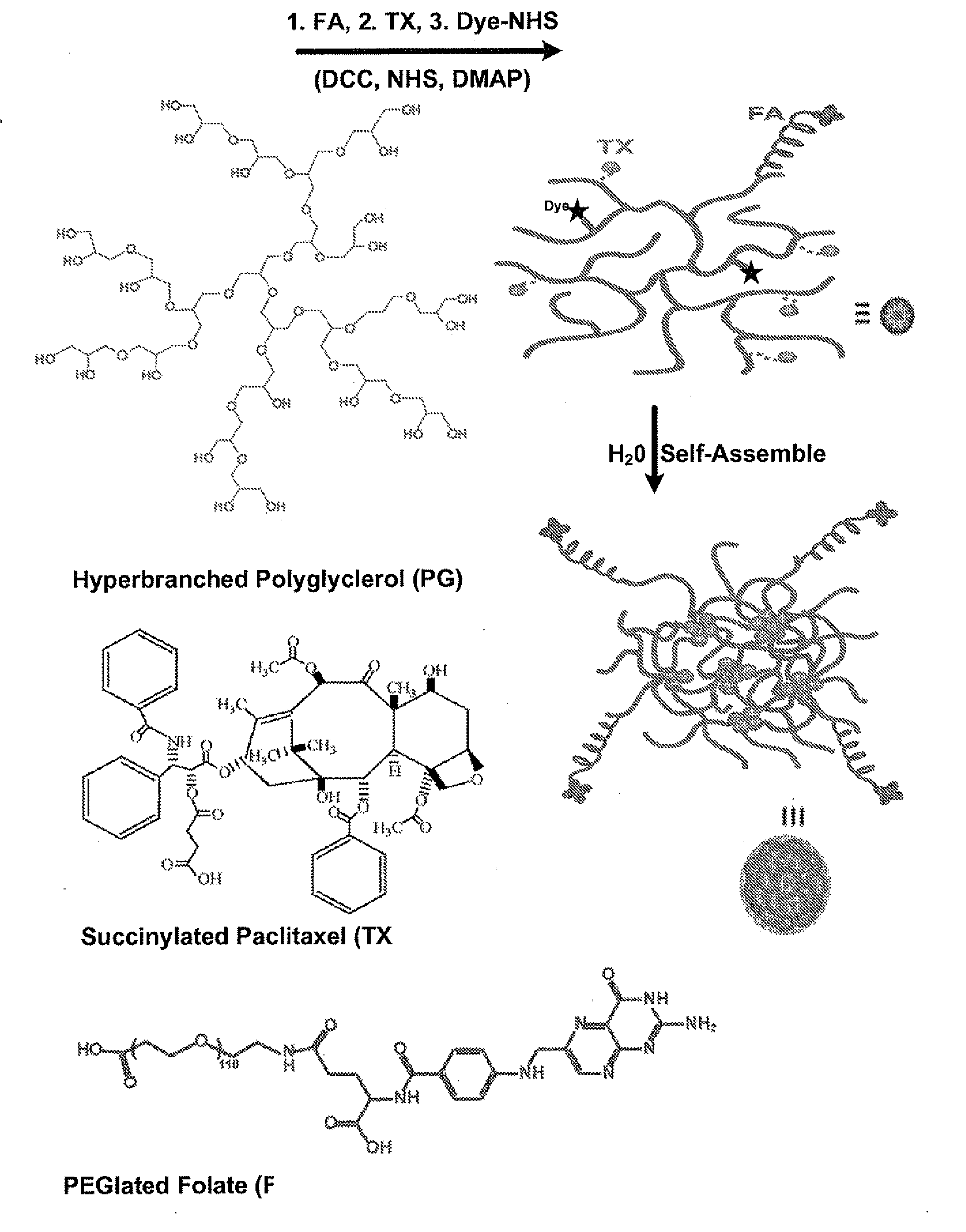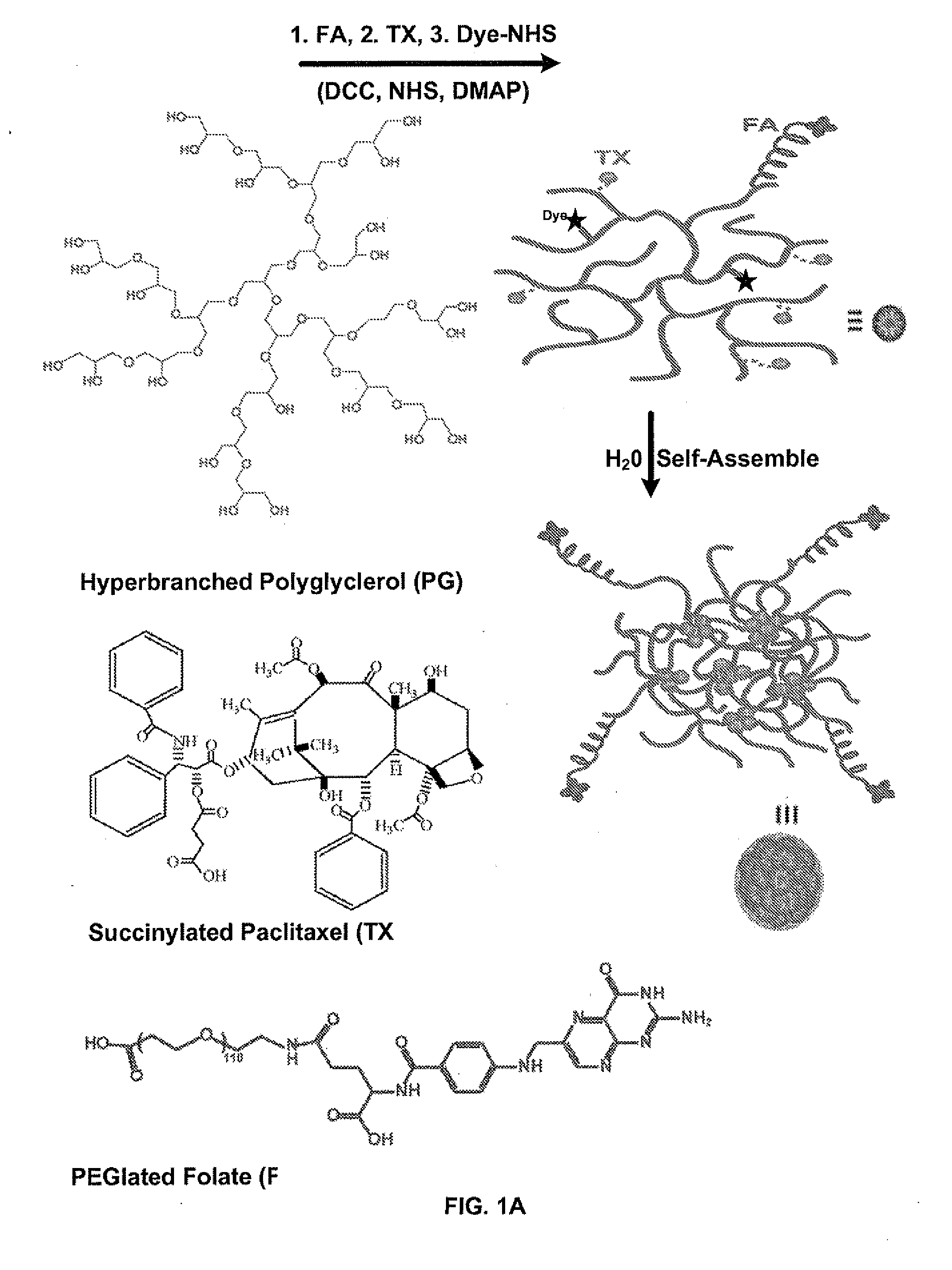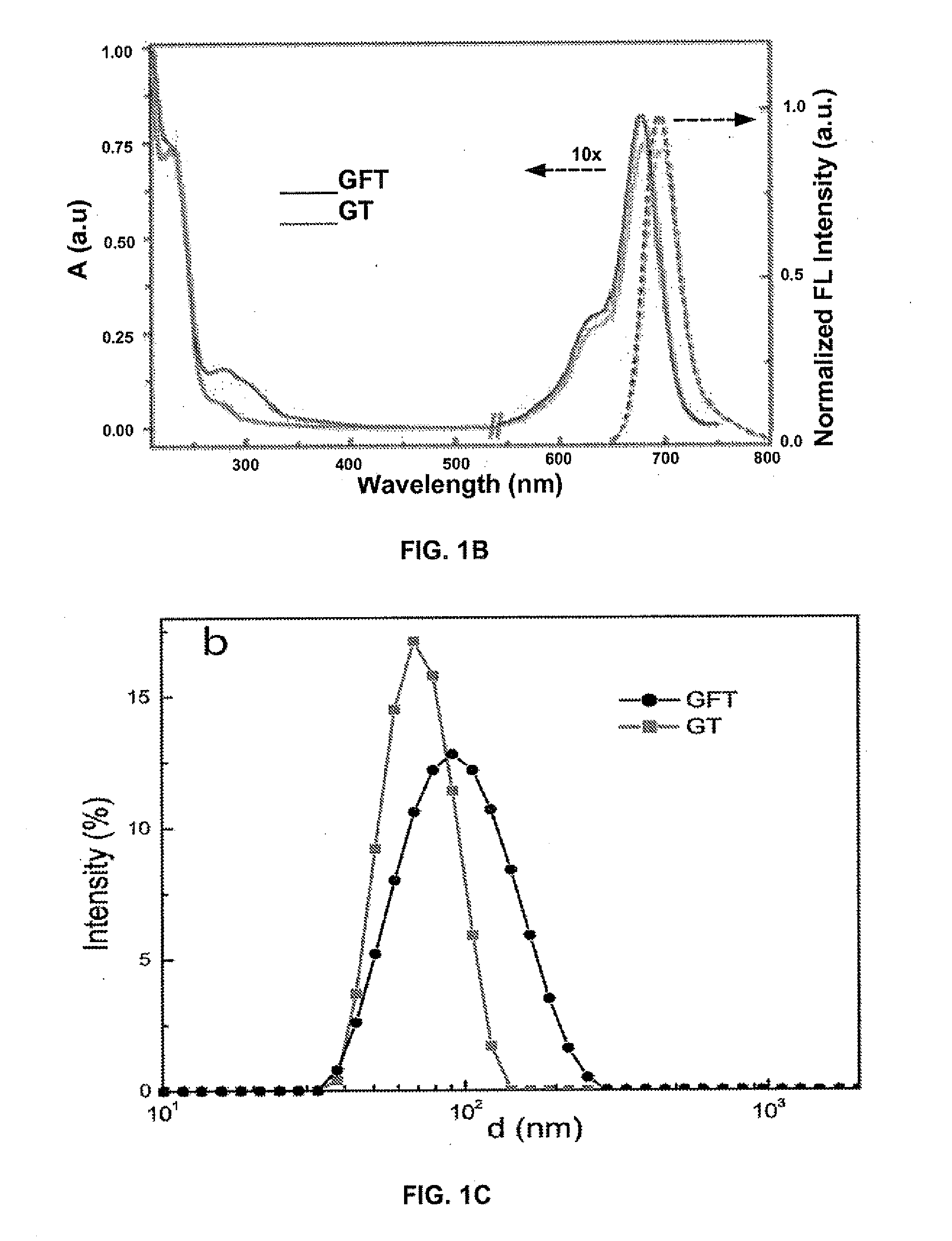Branched Multifunctional Nanoparticle Conjugates And Their Use
a multifunctional, nanoparticle technology, applied in the direction of applications, drug compositions, biocides, etc., can solve the problems of poor specificity and dose-limiting toxicity, many pharmaceutical treatments still impart substantial risk to patients, and poor specificity, so as to enhance the epr effect of induced preferential accumulation, avoid rapid renal clearance, and increase the overall blood circulation of conjugates
- Summary
- Abstract
- Description
- Claims
- Application Information
AI Technical Summary
Benefits of technology
Problems solved by technology
Method used
Image
Examples
example 1
Synthesis of GT / GFT Conjugate Compounds
[0162]FIG. 1A shows the design and conjugation chemistry of a multi-component polymer-drug conjugate for targeted cancer imaging and therapy, using polyglycerol (PG, molecular weight=20,000 Da) as a hosting carrier for the other functional units, paclitaxel (TX) as an anticancer therapeutic agent, folate (FA) with a polyethylene glycol (PEG, molecular weight=5000 Da) linker as a targeting ligand and the near infrared (NIR) fluorescent dye cy55 as an imaging tag for tracking the delivery of the conjugate in-vitro and in-vivo. The controlled synthesis of PG was achieved via ring opening multibranching polymerization of glycidol under slow monomer addition conditions. TX was linked to the PG backbone through a degradable linker (succinic acid). The folate receptor was chosen as a targeting agent because it is highly overexpressed in many types of human cancer, such as head-neck and breast cancer, due to the increasing need of nutrients for cancer ...
example 2
Nanoparticle Characterization
[0165]UV-vis spectra of the nanoparticles of Example 1 were obtained on a Shimadzu (UV-2401) spectrometer using quartz cuvettes. Fluorescent spectra were recorded using a PTI fluorometer with excitation wavelength of 625 nm for cy5.5. Transmission electron microscopy (TEM) observation was performed on a Hitachi H7500 electron microscopy at an acceleration voltage of 75 kV. Dynamic light scattering and zeta potential measurement were carried out on a Malvern Zetasizer Nano ZS90 at 25° C., and the results are the average value of three consecutive measurement.
[0166]Poor water-solubility of TX has been a significant hindrance to its clinical use. After being conjugated to the PG carrier, the water solubility of TX was greatly enhanced, and 10 mg / mL TX equivalent solution of the conjugate can be readily prepared. In UV-vis spectra (FIG. 1B) of these conjugates, absorption peaks of TX at 230 nm and FA at 280 nm are clearly visible; the conjugation of cy55 to ...
example 3
Single Particle Imaging and Disassembly of Nanoparticles in Serum
[0167]Dye-labeled nanoparticles were dissolved in fetal bovine serum with a dye concentration of 100 nM, and the solution was incubated at 37° C. At a predetermined time interval, 2 μl of the solution was added on a glass slide and spread with a cover slip. Photographic images were taken on an Olympus fluorescent imaging microscopy with 300 ms exposure time.
[0168]Dynamic light scattering (DLS) and transmission electron microscope (TEM) (FIG. 1C) revealed that the conjugates can self-assemble into uniform nanoparticles in water, with a hydrodynamic size of 70-100 nm (measured by DLS) and an average size at the dried state about 50 nm measured by TEM (FIG. 1D). The FA-targeted nanoparticle (GFT) is 10-15 nm larger than the non-targeted one (GT), which is due to an addition layer of PEG spacer added by the FA ligands. This self-assembly behavior is driven by the hydrophobic interactions between TX linked on the polymer ca...
PUM
| Property | Measurement | Unit |
|---|---|---|
| average molecular weight | aaaaa | aaaaa |
| average molecular weight | aaaaa | aaaaa |
| average molecular weight | aaaaa | aaaaa |
Abstract
Description
Claims
Application Information
 Login to View More
Login to View More - R&D
- Intellectual Property
- Life Sciences
- Materials
- Tech Scout
- Unparalleled Data Quality
- Higher Quality Content
- 60% Fewer Hallucinations
Browse by: Latest US Patents, China's latest patents, Technical Efficacy Thesaurus, Application Domain, Technology Topic, Popular Technical Reports.
© 2025 PatSnap. All rights reserved.Legal|Privacy policy|Modern Slavery Act Transparency Statement|Sitemap|About US| Contact US: help@patsnap.com



